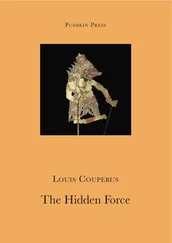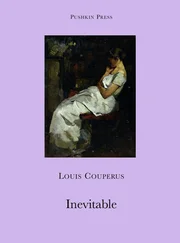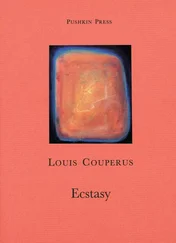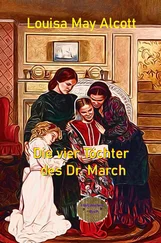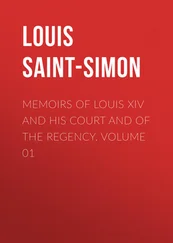But only seconds after she asks him this, Vincent, in poor condition anyway, faints. The effect on Eline of both his remarks and his swoon is astonishing, and yet, on reflection — for this is a novel of great subtlety in its psychological and social observation — perhaps we should not be so very astonished. Eline now begins to wonder that ‘her love for Otto might not be enough after all’; for an instant she has seen behind her imaginings of her married life-to-come an alarming ‘ghost’. Vincent’s faint draws her, emotionally, romantically, towards him — though there is no evidence of any deeper feeling for her on his part than cousinly affection and gratitude. (Indeed, perhaps if there had been, she would not be so drawn.) Couperus, born in 1863, was twelve years the senior of Carl-Gustav Jung (1875–1961) yet Eline Vere (1889) strikingly anticipates key Jungian ideas, present also in his subsequent fiction. Vincent, sick, seedy, idle, is the shadow to Otto in Eline’s psyche, and indeed embodies important features of her own self. Hence her fleeting but frightening vision of the ‘ghost’, which is this shadow’s projection. Eline’s consequent casting-off of the Otto she still loves — causing her genuine anguish in which, for all her egotism, concern for the rejected young man is a strong component — is, in truth, an unconsciously motivated attempt to assert her personality in all its complexity on behalf of its unending quest, its driving need for wholeness. It may also be seen, of course, as a revolt against that very pre-ordination — societal and/or circumstantial — that her cousin was proclaiming before he passed out.
But there is more still to be discovered in Eline’s action. Her moods, her nervousness, her preposterous fantasies which spiral away from those who have inspired them, her bouts of illness (or indefinable un-wellness) may exasperate us readers almost as much as they do her elder sister, Betsy. But when we stand back and view them collectively, do they not reveal her unwitting, instinctive recognition of what is dead or dull in her society, of what may be pleasing, even admirable on the agreeable, convention-hallowed surface but which never addresses what runs deeper? In hoping for a suspension of time’s movement, Eline at twenty-three may have been entertaining the dreams of a silly adolescent, but is she not, in the very fervour of her wishes, also fighting herself and her own frightening powers of understanding? Hasn’t she all along had an appreciation of life’s darker side — whereas the less complicated Otto, at any rate up to this point, has not? Eline’s problems derive from her not knowing how to cope with her troubling appreciation, receiving no guidance here from the largely stultifying codes by which her more adjusted friends and relations live.
Eline’s rejection of Otto constitutes the heart, both structural and moral, of the novel. As the above adumbrates, her action is a far from simple matter. Lionel Trilling wrote about Jane Austen’s novel Emma (in Beyond Culture , 1975): ‘We never know where to have it. If we finish it at night and think we know what it is up to, we wake the next morning to believe it is up to something quite else; it has become a different book.’ This holds true for Eline Vere too. And in both cases the book’s ability to change itself in our minds is inextricable from the delineation of the woman who gives it its title.
. .
Louis Couperus was only twenty-six when Eline Vere came out, and had previously published only unsatisfactory and derivative poems (in 1883 and 1884). Though it is a literary artefact of precocious sophistication and accomplishment, the novel is also palpably the creation of a young man whose years were a great advantage to him in its composition. For Couperus is still very much of the milieu he is re-creating, aware though he is of its limitations and faults, and he clearly was intimately familiar, as a member himself of youthful Hague society, of the very pleasures, expectations and hopes he ascribes to his large cast of characters, almost all of them his contemporaries. Their gossip and banter, their flirtations, their little tiffs and misunderstandings and reconciliations, their plans for and doubts about the nature of their future adult lives convince us (and never more so than in Ina Rilke’s spirited and linguistically sensitive English) because they are done essentially from the inside. A young man like Etienne van Erlevoort, lazy and industrious, facetious and affectionate by turns, springs to life off the pages — on which he performs no absolutely essential dramatic act — as though a relation of the author’s own, slyly observed over many years, were being presented to us.
Youth surely accounts also for the infectious physicality of the work. We disport ourselves with its characters at the beaches and by the dunes of Scheveningen, and deep in the woods of Gelderland too; we are present at amiable wrestling matches, ending with one boy leap-frogging over his partner, and are right there on the little boat as it is steered down a country stream past thick pads of waterlilies. These are all triumphs of the writer’s kinaesthetic powers, and stand in contrast to, and perhaps at variance with, his other less healthy and wholesome aesthetic abilities, when he draws us near that sombre and threatening shadow-land which those such as Vincent Vere know only too well.
Couperus was helped in his chosen task of bringing his own society to life by two important features of the contemporary literary scene. He called Eline Vere ‘A Novel of The Hague’, partly because there actually flourished at the time a popular genre known simply as ‘The Hague novel’. This dealt with the city’s social life, in something of the manner of those English ‘silver-fork’ novels of the period 1825–1850, or of such now-forgotten but once widely-read English novelists of the 1880s as Rhoda Broughton and W. E. Norris. Its principal readers were female, drawn largely from a lower social class than its books’ protagonists; it therefore appealed to their eagerness to hear what was going on in such elegant streets of the Dutch administrative capital as the Nassauplein where Eline lives with Henk and Betsy van Raat, in a house which Couperus himself had inhabited. We can see how Eline Vere , which was hugely successful from the very first, partakes of this category and could meet the wishes of its enthusiasts. From its opening description of the gleeful preparations for a Society tableau vivant to its closing evocation of the ‘quite splendid’ villa furnished ‘with considerable luxury’ in which the recently wed Paul and Frédérique are now living (admittedly not in The Hague but in Heibeek), the novel leaves us in no doubt whatever that we are moving among the well-off and well-connected, whom the author knows at first hand. And a good measure of both the charm and the interest of these people with whom we are concerned does indeed derive from their favoured station: their easy manners and articulate conversation, the pleasantness of the innumerable dinner-parties and expeditions which amply set off their developing personalities, their ability, if they so wish, to yield to impulse and pursue some hobby or passing enthusiasm (Paul van Raat’s excursions into singing and painting conspicuously come to mind), or even to take their time over their studies and thus over deciding what they should be doing in life (Etienne is a good, and a happy, example). And some of them, of course, never do make any satisfactory decision here, and yet do not seem to us much the worse for it; in truth the very leisureliness of their lives gives them enviable scope for exercising fundamentally amiable qualities. The superbly realised Henk van Raat, with his two devoted Ulmer hounds, himself several times likened to a Newfoundland dog, is perhaps the best instance of this. The important plot lines of Paul’s relationship with Frédérique van Erlevoort, Georges de Woude van Bergh’s with Lili Verstraeten, Marie’s with Otto would not at all be out of place in a run-of-the-mill ‘Hague novel’, and, like that genre’s intended readers, we are ceaselessly stirred to read on by asking ourselves (even on re-readings, such are Couperus’s narrative gifts): ‘Will they. . or won’t they? Will she. . or won’t she?’, such questions and their answers providing the story’s dynamics.
Читать дальше

